Hoya does not bloom: why and what to do?
The rays of the sun flitting from flower to flower, quivering drops of breathtakingly smelling nectar, curly vine stalks, such a picture can be imagined anywhere, except for a city apartment in a not tropical climate. Although, experienced florists have long tamed the wayward beauty hoyu, and create a unique color of subtropics on a strip of a narrow window sill.
Still, it is difficult to please a southerner, and without proper attention from the owner, she begins to feel sad. Eyes and sense of smell are deprived of the sight and aroma of its extraordinary, as if molded from wax inflorescences. Careful preparatory work before settling the hoya can help to avoid such a nuisance, but if, nevertheless, wax ivy does not bloom, it is worth investigating and finding out the reason that prevents the appearance of inflorescences.
Content:
- Hoya: botanical reference
- Hoya does not bloom, the reason is improper care
- The reason for the lack of flowering is disease
- Pests attacking the hoyu
- Helpful Hints: How to Care for Wax Ivy
Hoya: botanical reference
Scottish botanist Robert Brown gave the tropical vine a name, under which it is still listed. Wax ivy has the honor to bear the name of the famous English gardener Thomas Hoya, who devoted almost his entire life to the study of tropical plants and their cultivation in greenhouses and greenhouses.
The history of the hoya begins in tropical forests, where the liana feels comfortable in the open forest, climbing up the trunks and bathing in the scattering of sunlight breaking through the crown of the trees. According to its characteristics, hoya is adjacent to succulents.
And although the hoya is represented by a rather large species family, two representatives of the liana are cultivated in home floriculture:
- Hoya is fleshy. The plant has fleshy, oval shiny leaves, dark green in color. Star-shaped flowers are collected in umbellate inflorescences, and they appear under favorable circumstances from May to October. Hoya can also bloom several times a year. While it blooms, large drops of nectar appear on the petals of these unusual inflorescences. This look is suitable for those who are just going to add hoya to their pet collection.
- Hoya is beautiful. It is a low-growing shrub with creeping shoots. Thin stems are adorned with small light green leaves, and small honey-bearing flowers, collected in graceful inflorescences, spread around a scent similar to that filling a spring garden, daffodils. The crown of the umbrella is a deep crimson color. And the species variation, for all its beauty, is distinguished by a nasty character. Only an experienced collector of flower cultures can cope with it.
Beloved, because of its unusual appearance, wax ivy has gathered many fans in its fan club, but if someone deviates from the set of rules for caring for a capricious person, then such carelessness turns out to be a lack of flowering for the owner of the hoya.
Hoya does not bloom, the reason is improper care
Sometimes, all the failure in a relationship with a beautiful vine is based only on the fact that she is not provided with proper care:
- Location.Although this family is not one of those who are used to roasting in the sun, but being under diffused and constant light, this is the habitat of the plant. So, first of all, the vine should get a proper registration on the south, east or west window, and in the very first row, directly in front of the glass (but from the beginning of spring in the phase of the active midday sun, the culture must be shaded in order to avoid burns). Burns will also be if the vine is pressed against the window leaf. It is best to plant the hoya in a hanging planter, and fasten the stems around the perimeter of the window. Plants that are far away or on the north window will not bloom.
- It is important to observe the temperature regime. In summer, the ambient temperature should be from 22 to 25 degrees, a temperature from 16 to 18 degrees will help to transfer the winter months. Of course, the hoya will perfectly survive the winter even with a warmer winter, but this will not affect flowering for the better.
- Hoya loves warm showers and abundant watering. But the legs should be dry and not vegetate in stagnant water. So good drainage is needed. In principle, dry air is not a hindrance to plant life, but this factor will entail either poor flowering or its complete absence.
- Liana loves delicious additives in the form organic and mineral fertilizers... But with excessive saturation, she begins to be lazy, increases only the leaf mass, completely forgets about her flowers, and also attracts fungal diseases.
Simple rules will help to form an excellent microclimate in which the hoya will feel at home, and, having relaxed under the gentle warmth of the nascent spring sun, will dissolve white-pink star-shaped inflorescences.
The reason for the lack of flowering is disease
Even in the excellent climate created in an ordinary city apartment, no one is safe from the fact that an unkind wind will bring disease. And here already about any flowering, there can be no question. All phytoimmunity is tuned to preserve the life of the flower.
But you can help your pet, the main thing is to recognize the enemy in time:
- A common fungal disease is stem rot. With this disease, the whitewash becomes lethargic and soft, changes color, and decays. This fungus spreads very soon, so you need to act immediately. Although with a strong spread of the focus of the disease, the plant will have to be destroyed entirely. But if there is a chance, then it is necessary to remove the dead socks and sprinkle the cuts with activated carbon, then carefully dig up the ground and add some coal to the ground. Prevention of the appearance of fungus is the device of a good drainage layer so that the earthy clod does not become waterlogged.
- Chlorosis is a consequence of a violation of photosynthesis. The leaves brighten, twitch with a yellow tint and become covered with faded white spots. They look very unhealthy. This means that the hoya is weakened and lacks feeding. It is also necessary to spray the plant with such preparations as "Ferovit", "Micro Fe" or their analogues. It is worth noting that spraying the plant significantly speeds up the healing process, rather than when the drug is injected at the root.
- The sooty fungus is dangerous because it literally clogs the respiratory system of the plant. It manifests itself in the form of a dry sooty film spreading over the leaves. It is urgent to collect and destroy the pests that form the film. Treat the leaves with a sponge and soapy water, then carry out active disinfection fungicides.
- Dry spotting or alternaria has a detrimental effect on the leaves, which naturally entails a failure in the flowering of the hoya. The mushroom first devours the lower leaves, and then slowly climbs up, if it is not recognized in time. A fertile environment for this pathogen is constant temperature jumps and changes in humidity. The fight against disease is to remove and dispose of dead leaves. It is worth treating with copper-containing preparations.
- Phylostictosis also affects the leaves.To begin with, inconspicuous dark or purple dots appear, then they grow, dry out the leaf, and crumble its middle, which has become thin like parchment. For treatment, it is urgent to change the soil, but the new one must be steamed. Remove diseased leaves, reduce air humidity and apply drugs that fight fungal diseases of plants.
Pests attacking the hoyu
The hostile attack of pests is also a factor due to which the plant may not begin to bloom. Timely treatment and prevention of such invasions will help protect the delicate hoya.
Shield, aphid and spider mites, frequent hostile guests on vine shoots.
Often they easily get on plants due to the fact that the air around is too dry. Air currents saturated with water molecules prevent harmful bacteria and pests from moving freely. But in order to get rid of uninvited guests, you can invite the hoya to sip a glass, and wipe the leaves of the plant with alcohol.
The peel on some leaf species is rather thick and does not threaten a burn, but, and uninvited little creatures will not tolerate an alcoholic spirit and will leave the plant alone. You can also use insecticides to get rid of pests. So that the liana is not disturbed by nematodes, it is imperative to steam the soil mixture before planting either in the oven or in a double boiler. It is important not to overdry the mixture.
Helpful Hints: How to Care for Wax Ivy
In order for the hoya to please with its flowering, it is necessary to adhere to the following care rules:
- supplementary lighting phytolamps, this is a good practice that will allow the vine to wake up as soon as possible, cheer up, and think about the soon blooming of flowers
- faded inflorescences cannot be removed, new ones will bloom on them for next year
- flowers and buds can fall off if the plant is moved from place to place, the vine loves constancy
- flowering can be stimulated with water procedures, or more precisely, with a contrast shower (in a light version - moving from warm water to a little warmer and vice versa)
- hoya grows best in small pots
The most useful advice is that the hoya should definitely be settled at home. After all, the onset of warm spring days, when sunlight seems to seep through the green curtain of plants, will delight even more, when, after difficult work on the hoya device, one fine morning the first messenger of its flowering will be an incredible sweet aroma that beautiful inflorescences exude.
More information can be found in the video:



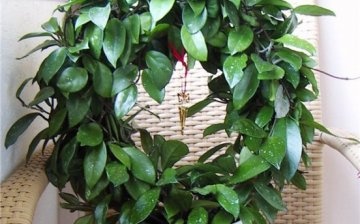
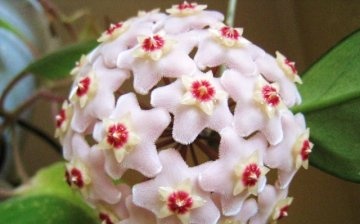
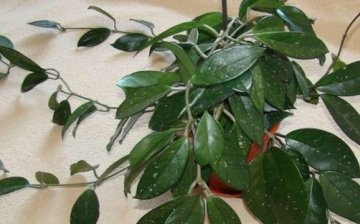
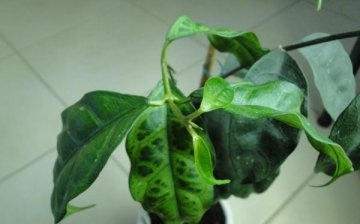
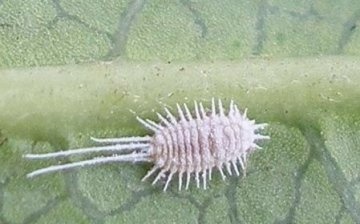
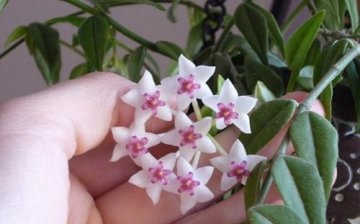






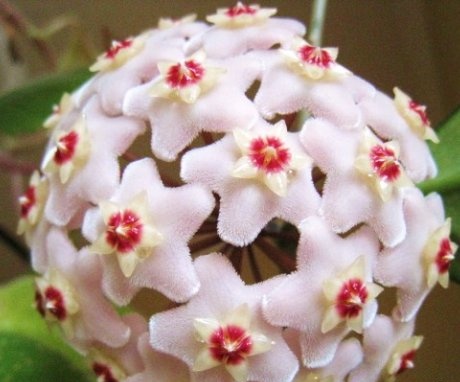
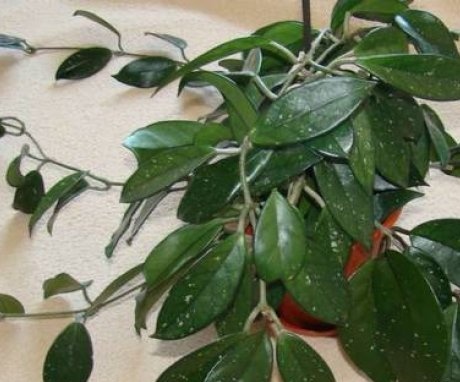
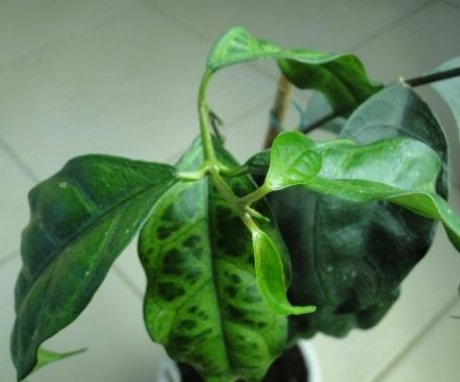
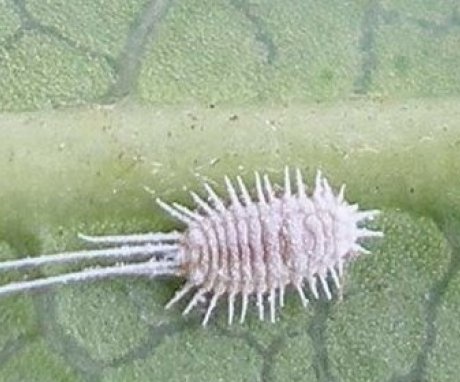
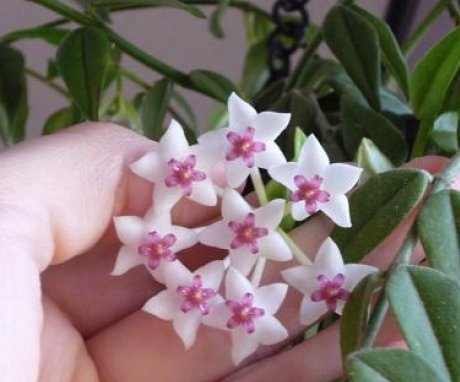
Judging by the description, this is a rather whimsical plant, therefore it is not surprising that it does not always bloom. For example, kk understand a contrast shower with warm and slightly cooler water. How to guess the degree of its coolness?